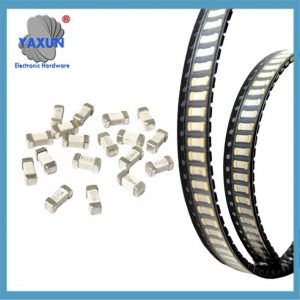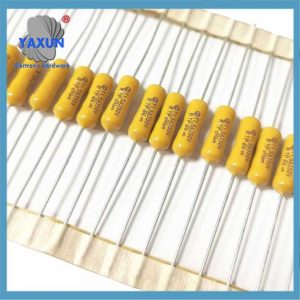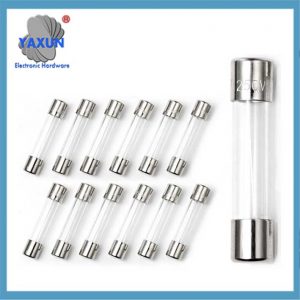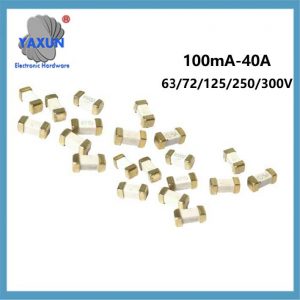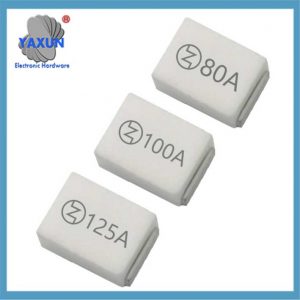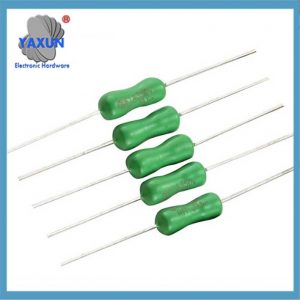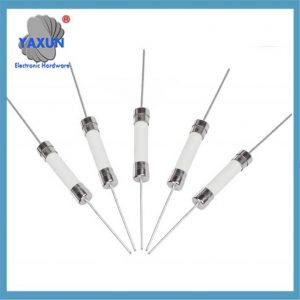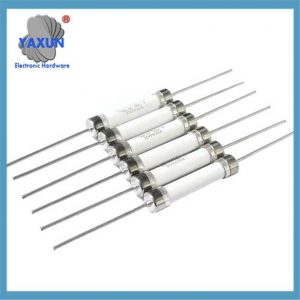The core difference between fast-acting and slow-acting fuses. Their main differences lie in the speed of melting and the ability to withstand pulse currents. Fast-acting fuses respond quickly and are suitable for protecting sensitive circuits; slow-acting fuses can withstand instantaneous surge currents and avoid false triggering.
Az alkalmazási forgatókönyvekkel kapcsolatban, it is mentioned that fast-acting fuses are suitable for resistive loads and IC protection, while slow-acting fuses are suitable for capacitive/inductive loads. This information is very important because the wrong application scenario will cause the device to fail to start or the protection to fail. It is particularly emphasized that slow-acting fuses must be used in occasions with surge currents such as switching power supplies.
In terms of technical principles, a “delay characteristics” of slow-acting fuses are derived from special structures and material designs, which enable them to absorb energy and resist pulses. This principle explanation is very valuable and can help users understand why fast-acting fuses cannot simply replace slow-acting fuses.
Practical suggestions for parameter selection: The rated current is 1.5-2 a munkaáram szorzata. Viszont, it is important to note the misunderstanding that the faster the action, the better. A “sluggishness” of slow-acting fuses is actually a reflection of their intelligent judgment ability.
It would be clearer to consider organizing it into a table to show the comparison. The table should include four dimensions: fúziós jellemzők, applicable loads, typical applications, and replacement principles, so that users can see it at a glance. Például, a “surge resistance” of a slow-blow fuse corresponds to capacitive/inductive loads, and typical applications are switching power supplies and motor starting.
The main difference between fast-acting (fast-blow) and slow-acting (slow-blow) fuses lies in the fusing characteristics, application scenarios and surge resistance. The specific comparison is as follows:
én. Core difference
| Features | Fast-acting fuse | Slow-acting fuse |
|---|---|---|
| Fusing speed | Gyors válasz, fast fusing when overcurrent (millisecond level) | Response delay, can withstand short pulse current before fusing |
| Surge resistance | Weak, easily mistakenly blown by instantaneous large current | Strong, can absorb energy to resist power-on surge |
| Applicable load type | Ellenállási terhelés (such as heating wire), sensitive IC circuit | Capacitive/inductive load (such as motor, switching power supply) |
II.. Application scenario
Fast-acting fuse applicable scenario
Resistive circuit with stable working current (electric kettle, fűtőtest);
Circuit that needs to quickly protect valuable devices (IC, MOS tube);
Sensitive electronic equipment without surge current.
Slow-blow fuse application scenarios
Capacitive circuits with startup surges (charging of switching power supply electrolytic capacitors);
Inductive loads with large startup currents (motorok, compressors);
Power input/output terminals and other links susceptible to pulse interference.
III. Selection considerations
Rated current: Általában 1.5-2 times the maximum operating current of the equipment to be compatible with surges.
Replacement principle:
Fast-break can be replaced with slow-break to improve anti-interference (except for sensitive circuits);
Never replace slow-break with fast-break, otherwise it will cause startup fuse (such as when the motor starts).
A megkülönböztetés jelölése:
Fast-break is usually marked with the letter F (Fast-acting), and slow-break is marked with T (Time-delay).
IV. Technical principle
Slow-break delay mechanism: Absorb energy through special structures (such as alloy melts), temporarily withstand pulse currents (such as capacitor charging currents), and only fuse when continuously overloaded.
Fast-break mechanism: The fuse has a fine structure and is sensitive to current changes, breaking immediately when overcurrent occurs.
⚠️ Misunderstanding correction: Slow-break does not mean “lassú válasz”, de megkülönböztetheti a hibás áramot és az impulzusáramot a hamis védelem elkerülése érdekében.
 English
English Afrikaans
Afrikaans العربية
العربية বাংলা
বাংলা bosanski jezik
bosanski jezik Български
Български Català
Català 粤语
粤语 中文(简体)
中文(简体) 中文(漢字)
中文(漢字) Hrvatski
Hrvatski Čeština
Čeština Nederlands
Nederlands Eesti keel
Eesti keel Suomi
Suomi Français
Français Deutsch
Deutsch Ελληνικά
Ελληνικά हिन्दी; हिंदी
हिन्दी; हिंदी Magyar
Magyar Bahasa Indonesia
Bahasa Indonesia Italiano
Italiano 日本語
日本語 한국어
한국어 Latviešu valoda
Latviešu valoda Lietuvių kalba
Lietuvių kalba македонски јазик
македонски јазик Bahasa Melayu
Bahasa Melayu Norsk
Norsk پارسی
پارسی Polski
Polski Português
Português Română
Română Русский
Русский Cрпски језик
Cрпски језик Slovenčina
Slovenčina Slovenščina
Slovenščina Español
Español Svenska
Svenska ภาษาไทย
ภาษาไทย Türkçe
Türkçe Українська
Українська اردو
اردو Tiếng Việt
Tiếng Việt

